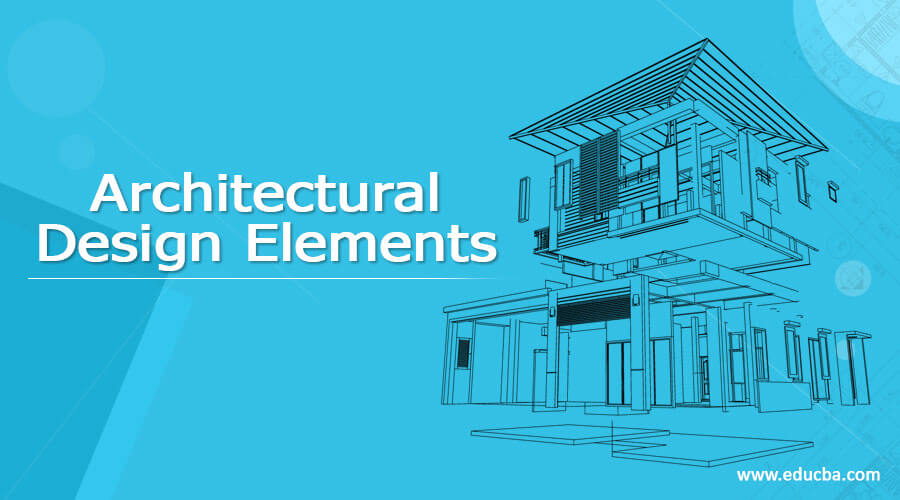Introduction to Architectural Design Elements
Elements are the key components that are inevitably required while creating a design or artwork. Every design or creation has some fundamental principles or elements defining the whole design process. The proper knowledge of these elements can help the users in creating attractive as well as well-balanced expertise. Interior and exterior architects, designers, compositors, and creative artists use architectural design elements. Appropriate use of these elements will help the artists visualize and portray ideas in reality.
Architectural Design Elements in Detail
The basic elements of any graphic design are similar and related. Moreover, the users should also keep the principles of design in their knowledge. The elements are the basic components of the design, while the principles of design help us to monitor the elements and their proper usage. Just like basic elements of the environment are mandatory for human survival, similarly, some inescapable elements are required to create a proper and creative architectural design.
Following are the elements required to create a balanced design with proper management of every detail.
1. Color
The most important aspect of any design is selecting and using the color schemes in a particular design. Selecting the proper color schemes can create some stunning architectural designs and interiors. This design element can show the difference between day & night, light & dark, intensity and strength of the structure. This design element includes hue and saturation, color wheels, and color schemes.
2. Light
Besides color elements, light is one of the most basic and major elements in interior and exterior architecture. Designers can create lights artificially or environmentally for designs. The choice of lights and illumination applied to certain compositions can switch a lot of aspects of the overall design. Placing windows or doors can create daylight effects. Applying natural lights to the compositions will only give stunning outputs to the viewers.
3. Tone
While designing exterior architecture, tone plays an important role in differentiating between the highs and lows of the structures and their point of creation. Playing and making the best use of color theory and color schemes determines the tone of the design.
4. Shape/Form
The shape is equally important in creating an architectural design with creativity and vision. Shapes can be geometrical, abstract, or organic. The way in which you use or create these shapes determines the properties of the element. Shapes can be created in 2D and 3D forms. The users can use shapes to inform and give depth to the design by using different shapes for varied structures or using the same shapes for similar objects.
5. Direction
Architectural designs are built-in in either a vertical direction or a horizontal direction. This element of designing is related to creating external infrastructures such as buildings, railways, or bridges. Creating structural components like walls, stairs, or rooftops requires proper Directional elements.
6. Proportion
Designing interior architecture requires a proportional balance between the furniture and the entire space. A conventional placement of a table, chair, and bed with the whole setup is what comes under proportion. If the user misses this element, the design can become too confusing or plain for the viewers. A defined space between objects can make a significant change in the modeling of the artwork.
“Proportion and balance are essential in any design. For example, in a remodeling project, the relationship between the layout of furniture and the space it’s in is crucial. Without careful consideration of elements like proportion and texture, a room can feel disjointed or uninviting. By harmonizing these elements, we create environments that feel cohesive and intentional.” — Khaled Dasher, CEO of Avenue Remodeling
7. Value
Again, value is the amount in which the designer creates differences between different structures placed in an interior design.
For example, the value of color saturation is lighter for one wall, while the other has a higher saturation value. The element of value is used to create an illusion in the eyes of the viewer to distinguish between components and objects.
8. Texture/Pattern
This element of architectural design is used to represent the appearance of the composition. Textures and patterns are responsible for creating a sense of perception in the eyes of the viewers. Combining different textures and patterns can give a detailed overview of interior designs and furniture. Texture also refers to the proper arrangement of every object in a sequence. Every exterior or interior design material uses pattern or texture to distinguish between designs and objects.
9. Line
The line is the most practical element in designing architecture. We can create horizontal and vertical lines to give depth and meaning to a particular object or surface. Lines help in connecting objects without making them too obvious for the viewers. Lines are created so that they seem to blend with the overall composition. We can use horizontal lines on the walls to make the wall wider and deeper or use vertical lines on cupboards or doors to make them look higher. You can use some lines as patterns, such as diagonal or spiral.
Conclusion
Summarizing the above article, we saw the most fundamental elements of architectural design. Users who consider these elements can continue to produce impressive and incredible compositions and artworks. Incorporating these elements into compositions created a remarkable difference in the eyes of the clients.
Recommended Articles
We hope that this EDUCBA information on “Architectural Design Elements” was beneficial to you. You can view EDUCBA’s recommended articles for more information.



